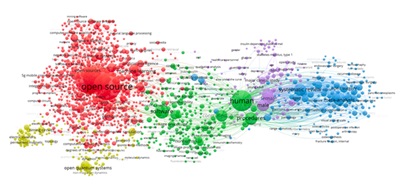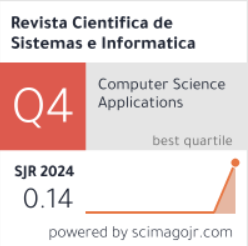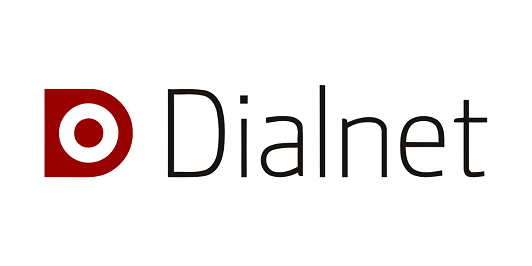Latest research trends on open-source research
DOI:
https://doi.org/10.51252/rcsi.v5i1.911Keywords:
open-source, open systems, bibliometric analysis, research trendsAbstract
We analyzed the latest trends in open-source research from 2020 to 2024. We used bibliometric techniques such as productivity and author collaboration, productivity and institutional collaboration, and co-occurrence of terms. We used Scopus to collect the sample we analyzed. Regarding the productivity by authors, those who stand out the most have exceeded the threshold of 9 articles in the last five years. Among the organizations, the most productive are the University of the Chinese Academy of Sciences (China), Carnegie Mellon University (United States), Zhejiang University (China), Massachusetts Institute of Technology (MIT, United States), and Stanford University (United States). The co-word analysis revealed five topical clusters: open-source software and artificial intelligence, medical research and scientific methodologies, systematic reviews and health impact studies, simulation, quantum physics and complex systems, and medical and demographic research.
Downloads
References
Aksulu, A., & Wade, M. R. (2010). A comprehensive review and synthesis of open source research. Journal of the Association for Information Systems, 11(11), 6. 576-656. https://doi.org/10.17705/1jais.00245
Ausejo Sánchez, J. L., Soto, F. G. C., Rosa, P. E. R. L., Palma, D. F. M., Campos, G. A. C., & Cadillo, A. J. R. (2024). Big data research in the business, management and accounting field: Revealing the thematic structure based on co-word analysis. Iberoamerican Journal of Science Measurement and Communication, 4(1), 1–8. https://doi.org/10.47909/ijsmc.116
Ayala, A. C. N., Valenzuela Narváez, D. A. O., Manes Cangana, G. A., Orbe, S. L. C., Torres Anaya, A. J., & Ayala Huaynatte, E. (2024). Blended learning research: Identifying research output patterns in Scopus (2000-2023). Iberoamerican Journal of Science Measurement and Communication, 4(2), 1–9. https://doi.org/10.47909/ijsmc.124.4
Bansal, J., & Bansal, M. (2021). Open Source Software (OSS): A Scientometric Study of Global Publications during 1999-18. Journal of Indian Library Association, 56(2), 84-92. https://www.ilaindia.net/jila/index.php/jila/article/view/707
Duarte, L., & Teodoro, A. C. (2021). GIS open-source plugins development: A 10-year bibliometric analysis on scientific literature. Geomatics, 1(2), 206-245. https://doi.org/10.3390/geomatics1020013
Evangelatos, N., Satyamourthy, K., Levidou, G., Brand, H., Bauer, P., Kouskouti, C., & Brand, A. (2018). Use of free/libre open source software in sepsis “-omics” research: A bibliometric, comparative analysis among the United States, EU-28 Member States, and China. OMICS: A Journal of Integrative Biology, 22(5), 365-372. https://doi.org/10.1089/omi.2018.0032
Kanwal, P. (2017). A Bibliometric Study of World Research Output on Free and Open Source Software Literature during 1960-2016. International Journal of Advanced Research in Computer Science, 8(3), 1067-1072. https://doi.org/10.26483/ijarcs.v8i3.3157
Khode, S., & Thakkar, S. (2012). Bibliometric analysis of literature published in emerald journals on open source. Gyankosh-The Journal of Library and Information Management, 3(2), 49-54.
Murray, D., McDermott, Y., & Koenig, K. A. (2022). Mapping the use of open source research in UN Human Rights investigations. Journal of Human Rights Practice, 14(2), 554-581. https://doi.org/10.1093/jhuman/huab059
Newby, G. B., Greenberg, J., & Jones, P. (2003). Open source software development and Lotka's law: bibliometric patterns in programming. Journal of the American Society for information science and technology, 54(2), 169-178. https://doi.org/10.1002/asi.10177
Patralekh, M., Vaishya, R., & Vaish, A. (2024). Impact of COVID-19 on Indian biomedical research: A bibliometric analysis using online data from 2017 to 2022. AWARI, 5, 1–13. https://doi.org/10.47909/awari.65
Raasch, C., Lee, V., Spaeth, S., & Herstatt, C. (2013). The rise and fall of interdisciplinary research: The case of open source innovation. Research policy, 42(5), 1138-1151. https://doi.org/10.1016/j.respol.2013.01.010
Shang, R.; Zhang, B.; Ma, H.; & Zhang, T. (2022). Research Status, Hotspots and Trends of Open Source Intelligence Abroad. Journal of Modern Information, 42(1), 5-13. https://doi.org/10.3969/j.issn.1008-0821.2022.01.001
Silva, D. G., Coutinho, C., & Costa, C. J. (2024). Exploration of Open Source in Low-Income Countries: Review and Future Research Directions. In 2024 International Symposium on Sensing and Instrumentation in 5G and IoT Era (ISSI) (Vol. 1, pp. 1-6). IEEE. https://doi.org/10.1109/ISSI63632.2024.10720490
Silva, D., Aparicio, M., & Costa, C. J. (2019,). Free and open source bibliometric study. In 2019 14th Iberian Conference on Information Systems and Technologies (CISTI) (pp. 1-6). IEEE. https://doi.org/10.23919/CISTI.2019.8760695
Toro, O. P., Correa, Y. A., Valencia-Arias, A., & Benjumea-Arias, M. (2020). A bibliometric analysis of the use of open source software in educational contexts. Problems of Education in the 21st Century, 78(1), 114. https://doi.org/10.33225/pec/20.78.114
Velmurugan, C., & Radhakrishnan, N. (2016). Literature Research Trends and Authorship Pattern of Open Software Engineering Journal: a Scientometric Study. In A. Kishore et al (Eds.), Modern Trends in Library & Information Science in Digital Environment Festschrift Volume in Honour of Dr. U.M. Thakur (pp. 263 -274). Uttar Pradesh, India: University Prakashan.
Vizalote-Rodriguez, G. A. (2022). Contribución de las TI en la mejora de la productividad de las PYME. Revista Amazonía Digital, 1(1), e164. https://doi.org/10.55873/rad.v1i1.164
Von Krogh, G., & Spaeth, S. (2007). The open source software phenomenon: Characteristics that promote research. The Journal of Strategic Information Systems, 16(3), 236-253. https://doi.org/10.1016/j.jsis.2007.06.001
Von Krogh, G., & Von Hippel, E. (2006). The promise of research on open source software. Management science, 52(7), 975-983. https://doi.org/10.1287/mnsc.1060.0560
Zhao, R., & Wei, M. (2017). Impact evaluation of open source software: An altmetrics perspective. Scientometrics, 110, 1017-1033. https://doi.org/10.1007/s11192-016-2204-y

Downloads
Published
How to Cite
Issue
Section
License
Copyright (c) 2025 Sergio La-Cruz-Orbe, Santiago Ernesto Ramos-y-Yovera, Fiorella Victoria Luperdi-Ríos, Abrahán César Neri-Ayala

This work is licensed under a Creative Commons Attribution 4.0 International License.
The authors retain their rights:
a. The authors retain their trademark and patent rights, as well as any process or procedure described in the article.
b. The authors retain the right to share, copy, distribute, execute and publicly communicate the article published in the Revista Científica de Sistemas e Informática (RCSI) (for example, place it in an institutional repository or publish it in a book), with an acknowledgment of its initial publication in the RCSI.
c. Authors retain the right to make a subsequent publication of their work, to use the article or any part of it (for example: a compilation of their works, notes for conferences, thesis, or for a book), provided that they indicate the source of publication (authors of the work, journal, volume, number and date).









